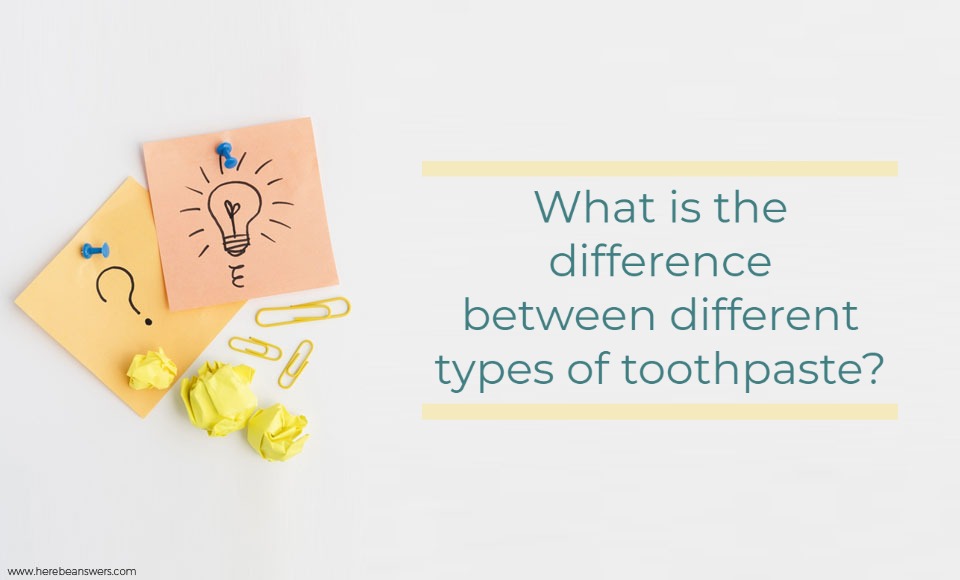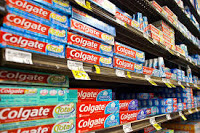There is not a lot of difference in the different types of toothpaste. Some manufacturers will add ingredients with certain properties, but in real-life use, the effects of those properties will be minimal. Here are some good examples of toothpaste types:
Whitening toothpaste typically contains a higher level of abrasives, which essentially “scrub” the surface of the tooth clean. However, these abrasives can often damage the teeth over time. Whitening toothpaste may also contain bleaching agents that are used for whitening clothes. But keep in mind that the amount of bleaching agents in each bottle of whitening toothpaste is significantly smaller than those found in clothing bleach.
The “enamel repair” toothpaste contains some calcium-based substances used to replace the surface layer of enamel whenever it gets damaged. This type of toothpaste is essentially a stopgap, and the material that’s deposited in will actually deteriorate pretty quickly in the teeth. It is crucial to note that we cannot replace enamel manually, as the body doesn’t produce any more over time. Enamel is normally produced by the body to prevent tooth decay.
Cavity protection toothpaste has an added sodium fluoride in its mixture, which is proven to help with the strengthening of enamel on each tooth. The effects of cavity protection toothpaste actually do work, but the vast majority of toothpaste today have sodium fluoride in them anyway, so claiming that the product has “cavity protection” is redundant.
Another type of toothpaste is the sensitive toothpaste, which has potassium nitrate that reduces the painful and numbing sensations felt by those who have sensitive teeth whenever they use a toothbrush. This tooth is more suitable for people who are quite sensitive to both hot and cold tooth products. The sensitive toothpaste may also have antimicrobial properties that reduce the formation of cavity to keep the teeth healthy and prevent bacteria and microbes from living on your teeth.
There is also a toothpaste type called smoker’s toothpaste, and as implied by its name, this product is generally used by those who smoke cigarettes or cigars. Smokers typically deal with yellowed teeth due to how they inhale the smoke from the tobacco in their mouths. Some smoke will stick to the teeth and will stain them over time. Smoker’s toothpaste has higher amounts of cleansing agents and abrasives than a regular whitening toothpaste in order to whiten the teeth much more aggressively.
The next type is the tartar control toothpaste, which contains sodium pyrophosphate that prevents tartar buildup on the teeth. Another compound found in this type of toothpaste is sodium hexametaphosphate that reduces stains on the surface of the teeth while also stopping tartar from forming. But, if you already have tartar on some of your teeth, the tartar control toothpaste may not be useful for your dilemma, and it is better if you consult your dentist and listen to what he or she can recommend to remove them.
The children’s toothpaste is the opposite of the smoker’s toothpaste, mainly due to the fact that it has fewer amounts of whitening agents and abrasives. Since children have a more delicate set of teeth, they would only need smaller amounts of abrasives so that their teeth won’t get damaged. In addition, children’s toothpaste also contains less fluoride, as it is proven that the substance can pose health risks to children if they consume too much of it.
A healthy type of toothpaste that is suitable for both adults and children is called the herbal toothpaste, which contains several natural ingredients instead of chemicals like abrasives, bleaching agents, and fluoride. Those who may be afraid of using regular whitening toothpaste found in grocery stores opt to go with herbal toothpaste. However, dentists warn people that herbal toothpaste contains little to no fluoride, and having none of it may render the toothpaste useless since fluoride helps in whitening the teeth.
All in all, buying simple whitening toothpaste is enough for you to clean your teeth. The differences in the types of toothpaste are very minimal for those who don’t really have problems with their teeth, but for smokers or children, it is recommended that they should have the types of toothpaste that are more suitable for them.

